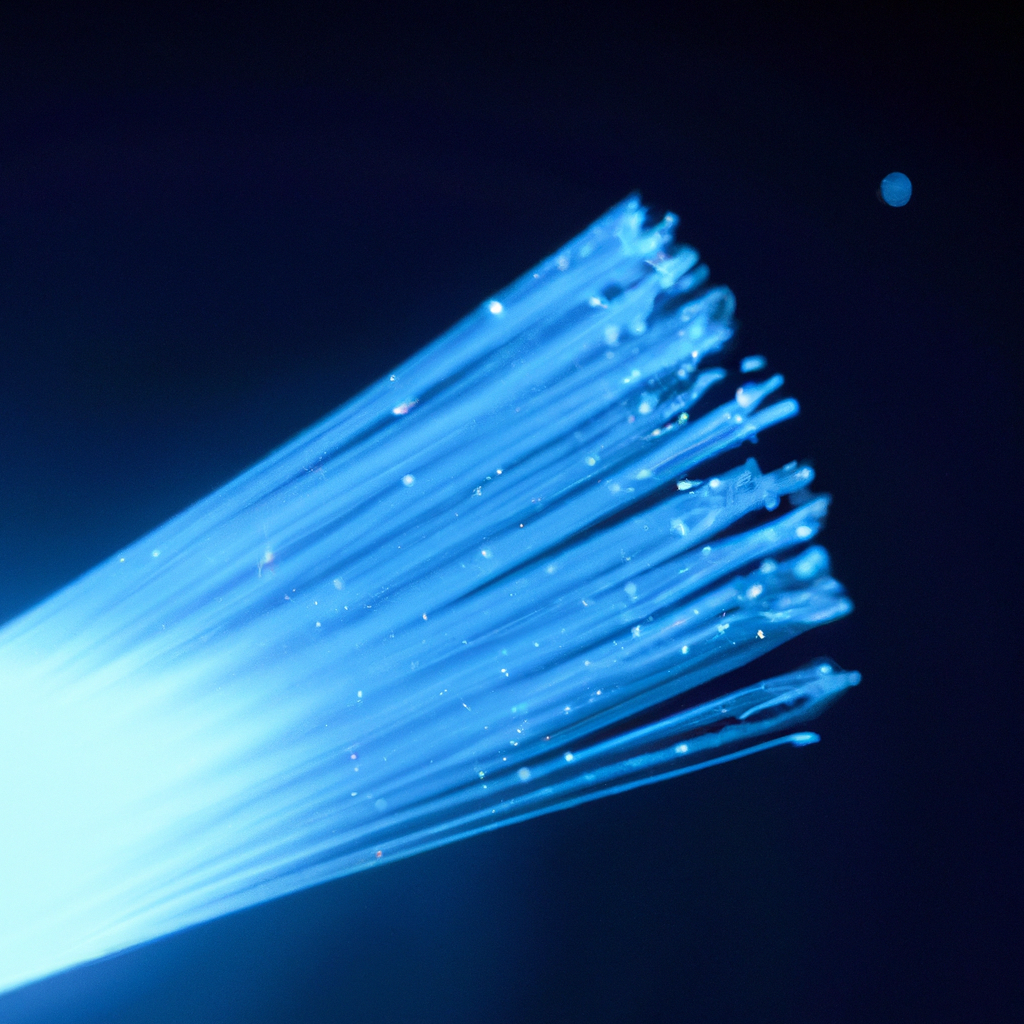Optical fibers are a vital component of modern communication technology. They are thin strands of glass or plastic that transmit light signals over long distances. The use of optical fibers in communication has revolutionized the way we communicate, allowing for faster and more reliable connections. In this article, we will explore how an optical fiber transmits light and the science behind it.
Structure of Optical Fiber
An optical fiber is made up of three layers – the core, the cladding, and the coating. The core is the central part of the fiber where the light signal travels. It is made up of a high refractive index material, typically glass or plastic. The cladding is a layer of low refractive index material that surrounds the core, preventing the light from escaping. The coating is a protective outer layer that provides strength and durability to the fiber.
Light Transmission
The transmission of light through an optical fiber is based on the principle of total internal reflection. When light travels through the core of an optical fiber, it continuously bounces off the walls of the core due to the difference in refractive indices between the core and cladding. This process of reflection ensures that the light remains within the core and travels along the length of the fiber.
The angle of incidence of the light determines whether it will be reflected or refracted at the boundary between the core and cladding. If the angle of incidence is greater than the critical angle, the light will be reflected back into the core. If the angle of incidence is less than the critical angle, the light will be refracted out of the core and lost. This critical angle is determined by the refractive indices of the core and cladding.
Types of Optical Fibers
There are two types of optical fibers – single-mode and multimode. Single-mode fibers have a smaller core diameter, typically less than 10 microns, and are used for long-distance communication. They offer high bandwidth and low signal attenuation, making them ideal for applications such as telecommunication and data transmission. Multimode fibers have a larger core diameter, typically between 50 and 100 microns, and are used for short-distance communication. They are commonly used in local area networks (LANs) and video transmission.
Fiber Optic Cable
Fiber optic cables are used to transmit light signals over long distances. They are made up of multiple optical fibers bundled together and enclosed in a protective outer jacket. The fibers are typically color-coded for easy identification. The cables are flexible and can be bent without affecting the light transmission.
Optical Communication
Optical communication is the use of optical fibers for communication purposes. It is a faster and more reliable method of communication than traditional copper wire communication. Optical communication has revolutionized the way we communicate, allowing for faster internet speeds, clearer phone calls, and high-quality video streaming.
Advantages of Optical Fiber
The use of optical fibers for communication offers several advantages over traditional copper wire communication. Some of these advantages include:
– High bandwidth: Optical fibers offer high bandwidth, allowing for faster data transfer rates.
– Low signal attenuation: Optical fibers have low signal attenuation, ensuring that the signal remains strong over long distances.
– Immunity to electromagnetic interference: Optical fibers are immune to electromagnetic interference, making them ideal for use in high-voltage environments.
– Security: Optical fibers are difficult to tap, making them more secure than traditional copper wires.
Conclusion
Optical fibers are a vital component of modern communication technology. They offer high bandwidth, low signal attenuation, and immunity to electromagnetic interference. The transmission of light through an optical fiber is based on the principle of total internal reflection. Optical communication has revolutionized the way we communicate, allowing for faster and more reliable connections. The use of optical fibers for communication purposes is likely to increase as technology continues to evolve.







